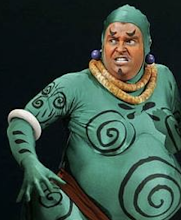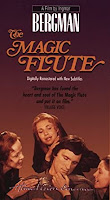As I’ve watched the various filmed performances of The Magic Flute, I’ve noticed a small trend, particularly among the more recent productions. Namely for the Queen of the Night to behave in a seductive way toward Tamino during her Act I aria “O zittre nicht.”
Of course, the libretto never implies that the Queen behaves this way toward her daughter’s young suitor, but this hasn’t stopped various sopranos from doing it. While as far as I know, the only Magic Flute character ever to say “Mrs. Robinson, you’re trying to seduce me, aren’t you?” has been Papageno to the Old Woman in the Florida Grand Opera’s 2013 production, in some productions Tamino could just as easily say it to the Queen. That is, if he could get a word in edgeways between the Queen’s flights of coloratura.














